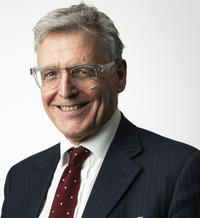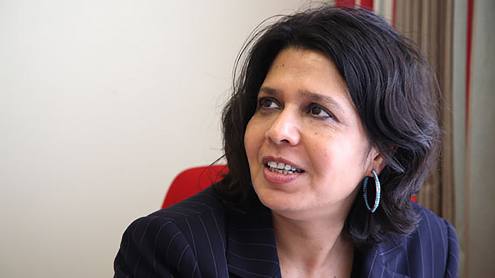Take heed. We are heading for a crash. Not a through the floor market crash; more the sound of a ceiling breaking. The end is in sight for Moore’s Law, the empirical observation that the power of a computer doubles every two years. It has done well to take us from the 6000 transistor Intel 8080 chip of 1974 to the Apple M1 of 2020 containing 16 billion. But it will not continue forever.
Conceptually, when the difference between a 1 and a 0 is the presence of a single electron the party will be over. In practice, densely packed chips start misbehaving before this limit is reached and the reason is quantum mechanics.
Ironically, the solution lies in the problem. Quantum states can be used to do the counting job instead of electrons. Welcome, the quantum computer.
An optimised world
Quantum computers are fundamentally different from existing digital machines. Current digital computers have a deterministic world where a 0 is a 0 and a 1 is a 1 but quantum bits (qubits) can take a value of 1 or 0 or any between. We are now in a probabilistic world.
While this is bad news for people who expect computers to give consistent answers, it is good news for bankers running programmes and expecting different results each time.
This is the world of optimisation where iterative approaches require programs to be run many times. It is not just in the finance world that optimisation problems stretch today’s computers to the limit. The Netflix “if you like x then you might also like y” algorithm and the “travelling salesman algorithm” for routing delivery trucks are equally challenging.
Exponential growth
Why are quantum computers well suited to solving such problems? The secret lies in the “0, 1 and everything in between” architecture. Four qubits can represent the same number of states as a 16-bit digital machine. So N shiny new qubits have the same processing power as “two to the power of N” old digital bits. Google’s Sycamore quantum processor with 53 qubits performed, in 200 seconds, a task the world's best supercomputer would take 10,000 years to complete. A 300-qubit machine could utilise more states than there are atoms in the universe.
While this is bad news for people who expect computers to give consistent answers, it is good news for bankers running programmes and expecting different results each time
There is broad agreement that the first practical machines will be around the 100-qubit mark and will appear within the next five years. What is more, quantum software companies like Cambridge University-spinout Riverlane are making advances in algorithms and predicting that such machines could do a lot more than we used to think.
This is what is driving investment. Three strong forces pulling in the same direction: market demand, rapidly improving hardware and a better understanding of how to write good software.
Collaboration
Here also lies the challenge. In this new technology, the hardware, the software and the applications are intimately tied up in a way the IT industry has spent decades teasing apart. New procurement models are needed. Furthermore, some types of hardware may be better at solving specific classes of problems than others. There may never be a single universal quantum machine. Therefore, it would be a grave mistake to expect a VHS versus Betamax showdown to solve this diversity. It is a fundamental feature of the technology which we will have to live with.
Who are the customers? A glib answer would be, anyone who wants a definite answer to an uncertain problem and fast. This is why quantum computing is so important in the world of finance. Applications will include high frequency and algorithmic trading, portfolio optimisation, risk adjustment, credit exposure, equity trading and market risk assessment.
The warning
There is a catch. Quantum computing will not appear as a plug-and-play technology. Riverlane is making good progress with an operating system but quantum computing has the same feel to it as digital computing did in the 1950s. It is an emerging technology.
Banks will need to bypass layers of consultancy, procurement and integration and return to a world in which the brightest bankers talk to the smartest physicists and engineers. Both sides have much learning to do. I have witnessed Professor Andrew Daley, a quantum theorist at the University of Strathclyde, in deep conversation with senior bankers. Success lies in a meeting of minds. Make sure they are the right ones.
Roger McKinlay is challenge director for quantum technologies at UK Research and Innovation.








